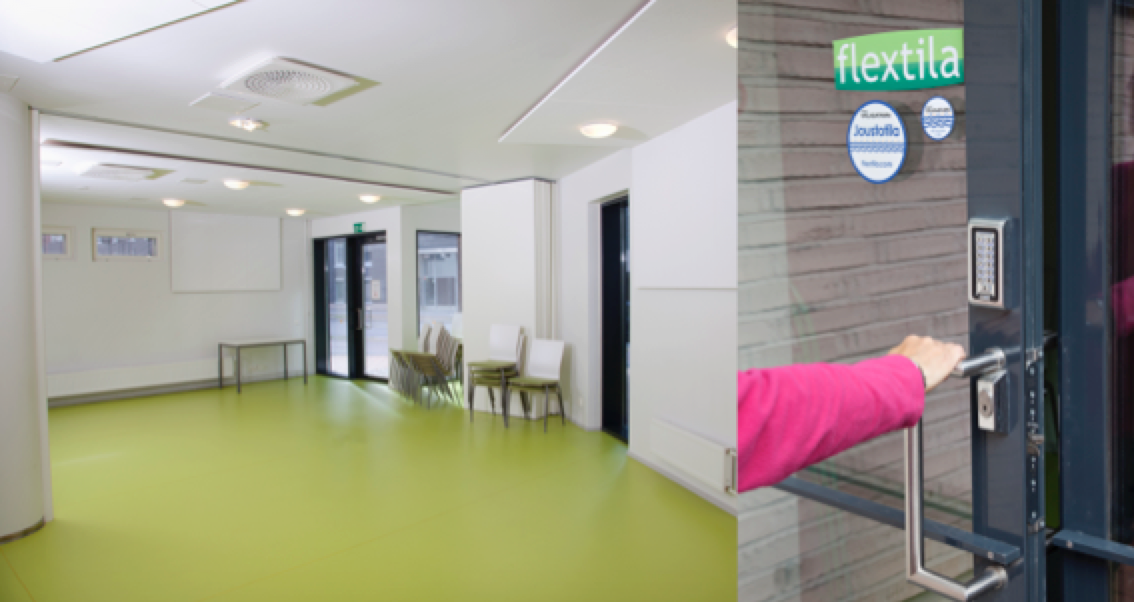"FLEXISPACE" SERVICE MODEL FOR SHARING SPACES, HELSINKI, FINLAND

PROJECT DESCRIPTION
Kalasatama, an old harbour area, was one of the first areas in Helsinki, where temporary use was explored as a tool for area development. Now as the area is being built, the idea of using the area as a free ground for experimentation has taken a new form. Kalasatama serves as a living lab, and a platform for smart and sustainable innovation.
Flexispace services let people book different spaces for their use on an hourly basis. Available spaces can be found from a web service. In Helsinki, there are several different booking platforms: city owned Varaamo and start-ups Flextila and Kliffa.
The model for sharing spaces using a digital service was developed in Kalasatama, Helsinki’s smart city neighbourhood during 2016-2017.
Experimenting: developing step by step
With agile and easy online reserving systems minimum amount of work is needed to open up and/or rent the vacant spaces.
Flexispace service allows different spaces in the neighbourhood to be used for citizen activities. At the moment, the model is tested and developed in collaboration with one booking service (www.flextila.com). Most of the spaces are equipped with a smartlock, which is integrated into the booking service.
The service would be most useful for supporting temporary use when used by an operator or agency. There is a need for services and operators for management of empty spaces and to ease the communication between the users and the owners of the spaces.
LESSONS LEARNED / RESULTS
For citizens and organisations big part of the value is created as available spaces can be found and browsed in an easy way. New tools that make the communication between the owner of temporary use location and the renter (temporary user) easier are needed.
The digital services support the testing of the fit between a place and its user: potential new temporary use projects can test the space by booking it first on hourly/daily/weekly basis.
”First come-first served” model does not necessary guarantee the optimal outcome in all cases. Therefore some level of ”curation” of users might be useful at least in some cases.
DATA
City information
Population size: 501 th - 1 mPopulation development dynamics within the city administrative limits (at the time of the project): Growing
Population development dynamics of the functional urban area (at the time of the project): Growing
Website of the city: http://www.hel.fi
Project information
Project territorial scale:
NeighbourhoodProject geographical area: City centre
Project/building proportions: No data/not applicable; Project Area: No data/not applicable
Project main actors: City Government; Resident association, group, citizens; Consultants, private professionals
Project dominant property ownership: Mixed
Project development stage (at the time of description): Just started
Project duration: No data/not applicable
Project starting date: 2015-2018



